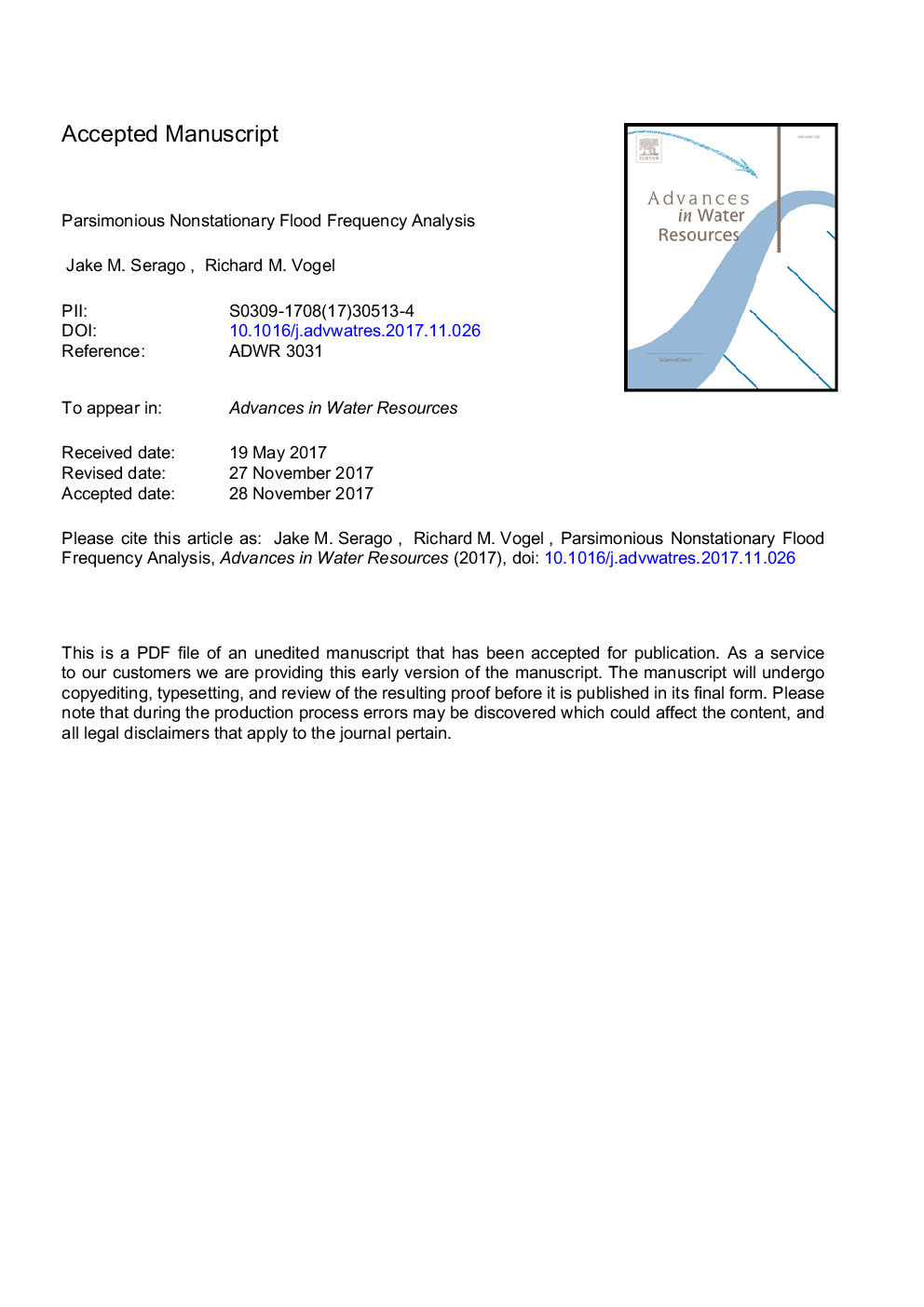| Article ID | Journal | Published Year | Pages | File Type |
|---|---|---|---|---|
| 8883370 | Advances in Water Resources | 2018 | 59 Pages |
Abstract
There is now widespread awareness of the impact of anthropogenic influences on extreme floods (and droughts) and thus an increasing need for methods to account for such influences when estimating a frequency distribution. We introduce a parsimonious approach to nonstationary flood frequency analysis (NFFA) based on a bivariate regression equation which describes the relationship between annual maximum floods, x, and an exogenous variable which may explain the nonstationary behavior of x. The conditional mean, variance and skewness of both x and yâ¯=â¯lnâ
(x) are derived, and combined with numerous common probability distributions including the lognormal, generalized extreme value and log Pearson type III models, resulting in a very simple and general approach to NFFA. Our approach offers several advantages over existing approaches including: parsimony, ease of use, graphical display, prediction intervals, and opportunities for uncertainty analysis. We introduce nonstationary probability plots and document how such plots can be used to assess the improved goodness of fit associated with a NFFA.
Keywords
Related Topics
Physical Sciences and Engineering
Earth and Planetary Sciences
Earth-Surface Processes
Authors
Jake M. Serago, Richard M. Vogel,
